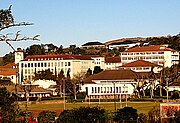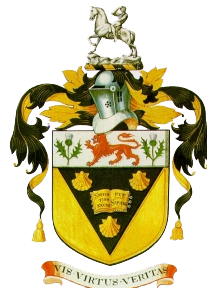
Rhodes University is a public research university located in Makhanda (Grahamstown) in the Eastern Cape Province of South Africa. It is one of four universities in the province. Established in 1904, Rhodes University is the province's oldest university, and it is the sixth oldest South African university in continuous operation, being preceded by the University of the Free State (1904), University of Witwatersrand (1896), University of South Africa (1873) as the University of the Cape of Good Hope, Stellenbosch University (1866) and the University of Cape Town (1829). Rhodes was founded in 1904 as Rhodes University College, named after Cecil Rhodes, through a grant from the Rhodes Trust. It became a constituent college of the University of South Africa in 1918 before becoming an independent university in 1951.

William Guybon Atherstone (1814–1898) was a medical practitioner, naturalist and geologist, one of the pioneers of South African geology and a member of the Cape Parliament.

Makhanda, also known as Grahamstown, is a town of about 140,000 people in the Eastern Cape province of South Africa. It is situated about 110 kilometres (70 mi) northeast of Port Elizabeth and 130 kilometres (80 mi) southwest of East London. It is the largest town in the Makana Local Municipality, and the seat of the municipal council. It also hosts Rhodes University, the Eastern Cape Division of the High Court, the South African Library for the Blind (SALB), a diocese of the Anglican Church of Southern Africa, and 6 South African Infantry Battalion. Furthermore, located approximately 3 km south-east of the town lies the world renowned Waterloo Farm, the only estuarine fossil site in the world from 360 million years ago with exceptional soft-tissue preservation.
James Leonard Brierley Smith was a South African ichthyologist, organic chemist, and university professor. He was the first to identify a taxidermied fish as a coelacanth, at the time thought to be long extinct.
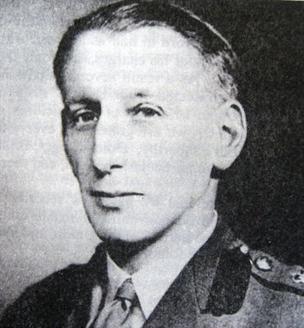
Sir Basil Ferdinand Jamieson Schonland OMG CBE FRS was noted for his research on lightning, his involvement in the development of radar during World War II and for being the first president of the South African Council for Scientific and Industrial Research.

Selmar Schonland, originally spelt Schönland, the founder of the Department of Botany at Rhodes University, was a German immigrant, who came to the Eastern part of the Cape Colony in 1889 to take up an appointment as curator of the Albany Museum. He came to Grahamstown via a doctorate at the University of Hamburg and a post at Oxford University. Working under Prof. Sir Isaac Bayley Balfour and Prof. Sydney Howard Vines, he developed an interest in the family Crassulaceae and contributed an account of this group to Engler & Prantl's Natürl. Pflanzenfamilien.
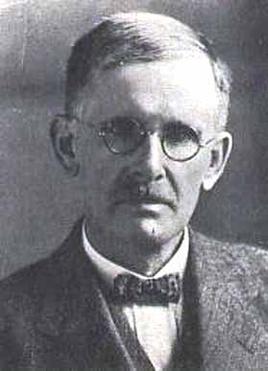
John Hewitt was a South African zoologist and archaeologist of British origin. He was born in Dronfield, Derbyshire, England, and died in Grahamstown, South Africa. He was the author of several herpetological papers which described new species. He also described new species of spiders and other arachnids.

Robert Allen Dyer was a South African botanist and taxonomist, working particularly on Amaryllidaceae and succulent plants, contributing to and editing of Bothalia and Flowering Plants of Africa and holding the office of Director of the Botanical Research Institute in Pretoria from 1944 to 1963.
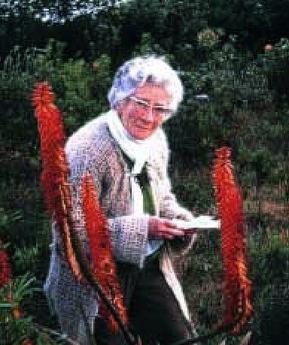
Amy Frances May Gordon Jacot Guillarmod, was a South African botanist and limnologist, noted for her work on the flora of Basutoland and some 200 publications, including numerous papers on wetlands, bogs and sponges.
Nathaniel James Merriman was the third Bishop of Grahamstown from 1871 until his death.

The Natural History Museum of Zimbabwe is located in Bulawayo, Zimbabwe, on Leopold Takawira Avenue.
The Makana Botanical Gardens is a botanical garden in South Africa operated by Rhodes University, located in Grahamstown.

Sir George Edward Cory, was an English-born South African chemist and historian, best known for his six-volume publication "The Rise of South Africa".

Jules Jacot-Guillarmod was a Swiss physician, mountaineer and photographer. He was born in La Chaux-de-Fonds in 1868 and died in the Gulf of Aden in 1925. As a mountaineer he was known for his ascents in the Swiss Alps but particularly for his participation in two Himalaya expeditions.
The Rhodes University Library is a library located in Makhanda, under the Makana municipality. It was initially established in 1937 in the Clock Tower building of Rhodes University College.

Margaret Mary Smith was born on 26 September 1916 in Indwe, Eastern Cape, a small village on the border of the Transkei. She was an ichthyologist, accomplished fish illustrator, and an academic.
Cuthbert John Skead, also known as "C. J. Skead", "Jack Skead" or "Skeado", was a South African naturalist, ornithologist, historian and botanist.
Florence Ellen Hewitt was a South African botanist, algologist and teacher, daughter of John Hewitt, curator of the Albany Museum from 1910 to 1948.

Constance Georgina Adams, also known as Constance Georgina Tardrew, was a South African housewife and collector of botanical specimens. Known by the nicknames Connie and Daisy, Adams was born in Cape Town and spent her early childhood on a farm in Tulbagh before moving to Warrenton. She subsequently lived in Kimberley before getting married, settling in Johannesburg where she became active in the Housewives League of South Africa. Inspired by her parents' interest in botany, she became a successful collector for both the Albany Museum in Grahamstown and McGregor Museum in Kimberley. She also cultivated a friendship with the Director of the latter, Maria Wilman. She collected over 240 specimens, which were presented to the Albany Museum, McGregor Museum and the National Herbarium in Pretoria.
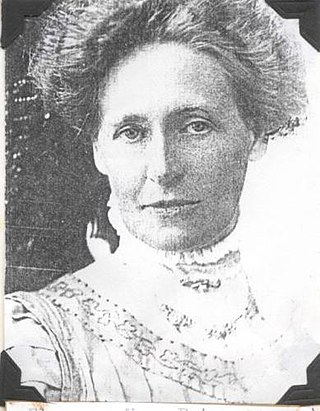
Florence Mary Paterson, née Hallack, also known as Mrs. T.V. Paterson, was a South African plant collector. Her specimens are kept in the herbarium of Albany Museum and the Bolus Herbarium of the University of Cape Town. She is honored in the plant name patersoniae and genus name Neopatersonia.
















